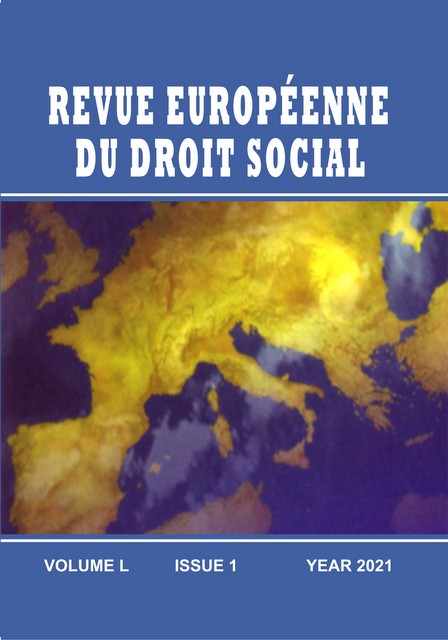EL IMPACTO DE LA CRISIS ECONÓMICA DERIVADA
DE LA COVID-19 EN LOS MODELOS DE TRABAJO.
RETOS Y REFORMAS PENDIENTES
THE IMPACT OF THE DERIVED ECONOMIC CRISIS
OF COVID-19 IN THE WORKING MODELS.
CHALLENGES AND PENDING REFORMS
Author(s): González Rabanal MiryamSubject(s): Human Rights and Humanitarian Law
Published by: Editura Bibliotheca
Keywords: Covid-19 economic crisis; New forms of work; changes in the production model; strategies to face the crisis;
Summary/Abstract: The pandemic has caused a great impact on economies around the world towhich it has been very difficult to react with some serenity and reflection. The political decisionsadopted, apparently based on health recommendations, have generated far-reaching economiceffects that have yet to be quantified and have required adaptations in record time to theprevailing forms of work in both the public and private sectors. One of the fundamentaldifferences compared to previous crises such as that of 2007-13 is that the causes of the Covid-19 crisis are known, although its consequences have not yet been accurately determined. Thisdifferential feature has the advantage that it allows governments to adopt measures to remedy itand to try to be prepared for what may come in the immediate future. This not only from thehealth point of view, which is obvious, but from the economic and labor market perspective too. Inpractical terms, if the lesson is assimilated and what has been learned is put into practice, it willbe possible to avoid making the same mistakes to solve a similar situacion. This should be themessage to try to temper both the sanitary and economic effects of the second wave of thepandemic, in whose frontispiece we seem to find ourselves. Although the 2008 crisis alreadyrevealed extraordinary weaknesses in the Spanish economy, its very strong dependence onconstruction (the so called the real estate boom) and the fragility of job stability in this "drag"sector of the economy, it has again been the real estate sector one of the most affected by the2019 crisis. We have learned little and, what is worse, few adjustments have been made in theSpanish production model since then. The same can be preached about tourism. Spain has beenfor decades a power in this sense, competing for the top positions in the world ranking withcountries such as France or the United States. It is true that the previous crisis also seriouslyharmed this sector, but far from modernizing and restructuring its production model, our countryhas lived off the income derived from the political instability of other rival states that have seentheir potential visitors heading towards our territory as a consequence of the instability of theirpolitical regimes as a result of the so-called “Arab Spring”. What no one can deny is that we arefacing an economic and labor crisis of which we still do not know the consequences and theduration. This is one of the first differences with respect to what happened a little over 10 yearsago when certain imbalances could be visualized based mainly on an excess of debt -both publicand private- mainly due to uncontrolled domestic demand, especially in Spain, but which no onewas able to predict exactly. To try to clarify some of these issues in order to design futurestrategies for economic recovery, the following is a set of data provided by official sources andprivate organizations trying to measure the effects of the pandemic on economic aggregates andthe labor market, as well as some personal reflections on the changes experienced in theeconomic model and those that are expected to occur, as a result of labor market adjustments, inthe most immediate future.
Journal: Revue Européenne du Droit Social
- Issue Year: 2021
- Issue No: 1 (50)
- Page Range: 13-31
- Page Count: 18
- Language: Spanish

